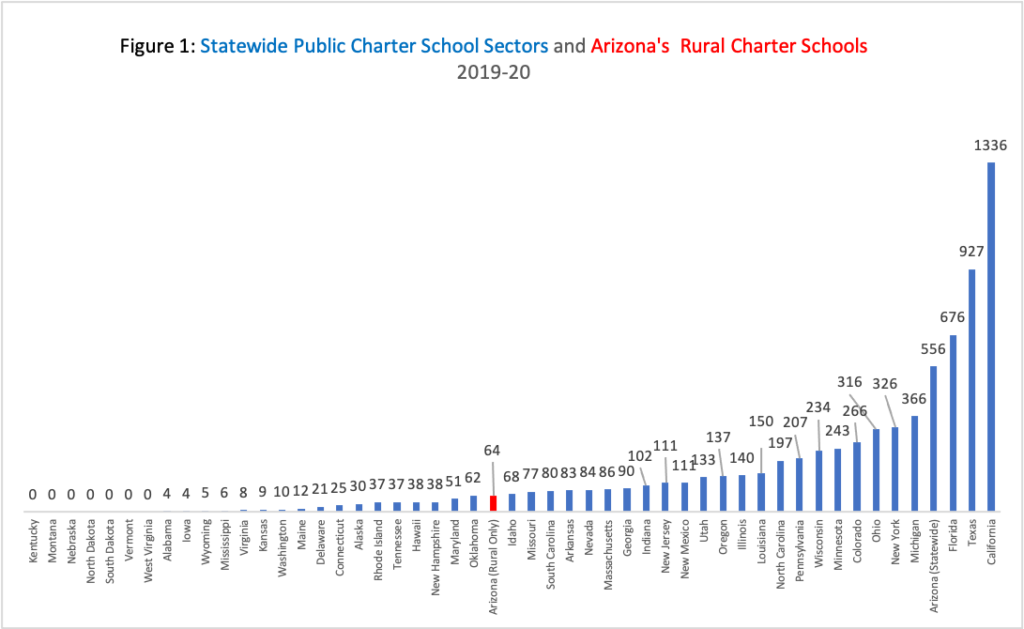According to the 2020 United States Census, of its total population of over seven million, approximately 340,000 Arizonans are living in rural communities served by 64 public charter schools – outnumbering the total number of charters statewide in 24 states (see Figure 1 below) all of which have a substantially larger population than that of rural Arizona.
 Academic achievement data from the Stanford Educational Opportunity Project shows that of the 25 rural Arizona charter schools with available scores, 21 met or exceeded the national average in academic growth scores for grades 3-8 in the 2008-2018 period. A variety of factors contribute to the small number of schools with growth scores, including but not limited to grade levels served- high schools are not included – as well as the number of years the school has been in operation.
Academic achievement data from the Stanford Educational Opportunity Project shows that of the 25 rural Arizona charter schools with available scores, 21 met or exceeded the national average in academic growth scores for grades 3-8 in the 2008-2018 period. A variety of factors contribute to the small number of schools with growth scores, including but not limited to grade levels served- high schools are not included – as well as the number of years the school has been in operation.

Some claim that charters will harm rural districts, but rural Arizona charters are not unique in showing academic improvement. The National Assessment of Educational Progress tests statewide samples of students in six subjects: 4th and 8th grade Mathematics, Reading and Science. When comparing the over-time progress for rural students for the longest period in which NAEP has data for rural communities (varies by exam) Arizona’s statewide rural students demonstrated greater improvement on 5 out of the 6 NAEP exams, often by wide margins.
Charter school supporters believe that rural students will benefit from pluralism in schooling as much as anyone, whereas opponents often argue that charters will damage rural education. Almost three decades in, the evidence from Arizona shows very clear benefits to rural communities.


